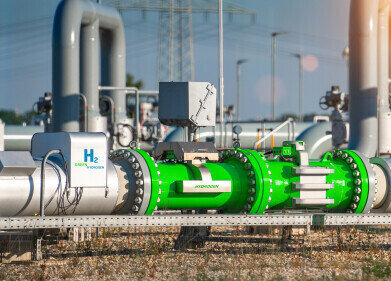Biofuel industry news
Can CO2 Be Used as Fuel?
May 29 2022
Carbon dioxide (CO2) is a primary greenhouse gas and key contributor to climate change. Though despite its muddy reputation, some advocates maintain the gaseous chemical compound has potential as an energy-efficient and eco-friendly fuel.
NASA is a pioneer of the concept and has developed an innovative technology that uses solar power to convert CO2 into fuel. The technology relies on thin-film devices constructed from metal oxide, which generate a photoelectrochemical cell. Solar energy is used to power the cell and convert CO2 to fuel before its released into the atmosphere. Compact, affordable and scalable, NASA maintains the device will transform the sustainable energy sector.
A NASA fact sheet explains, “This technology consists of a photoelectrochemical cell composed of thin metal oxide films. It uses sunlight (primarily the ultraviolet (UV), visible and Infrared (IR) portions)) and inexpensive titanium dioxide composites to perform the reaction. The device can be used to capture carbon dioxide produced in industrial processes before it is emitted to the atmosphere and convert it to a useful fuel such as methane.”
Capturing and converting CO2
In China, chemical plants are recycling CO2 and converting it into useable fuel. Icelandic-based firm Carbon Recycling International (CRI) is spearheading a project at a plant in Tongyezhen, which will capture and recycle more than 150,000 tonnes of CO2 per year. This equates to the same emissions released by tens of thousands of recreational cars. Instead of being released into the atmosphere, the chemical plant will capture the CO2 emissions and convert the gas into fuel.
“This is more expensive than producing conventional methanol, there is no doubt about it,” says CRI Chief Technology Officer, Emeric Sarron. “But companies that need to source renewable fuels are willing to pay a premium for it.”
US-based company Twelve is another pioneer of CO2 fuel. The California start-up is using modular electrochemical cells to convert carbon dioxide into synthesis gas. Also known as syngas, the blend is made up of hydrogen, carbon monoxide and carbon dioxide. “We definitely see ourselves being a player in greenhouse-gas emission reduction,” says Twelve co-founder, Etosha Cave.
“Cycling” vs “closed” processes
Scientists are continually on the search for new ways to reduce greenhouse gas emissions and decarbonise sectors. This includes the development of liquid fuels manufactured using CO2. While these types of fuels help to reduce net CO2 emissions, they don’t remove the greenhouse gas from the atmosphere. As a result, environmental scientists refer to them as “cycling” processes. In comparison, “closed” processes actively remove CO2 from the atmosphere. For example, some cement producers are using captured CO2 to manufacture cement and concrete building materials.
CO2 isn’t the only environmental pollutant being used to manufacture fuel. Companies are exploring the use of feedstocks such as municipal waste to manufacture eco-friendly biofuels. Industry experts Dr. Raj Shah, Allen Rakhamimov and Blerim Gashi explore the topic further in ‘Innovative and Unique Raw Materials Used Worldwide to Manufacture Biofuels’
Digital Edition
PIN 26.1 Feb/Mar 2025
March 2025
Analytical Instrumentation - Elemental Analysis for Quality and Process Control at Refineries, for Lubricants and Wear Metals in Engine Oils - Synthetic Lubricants: New Developments - Scaling...
View all digital editions
Events
Apr 08 2025 Birmingham, UK
Apr 08 2025 Kielce, Poland
Apr 08 2025 Ravenna, Italy
Apr 08 2025 Southampton, UK
Apr 08 2025 London, UK



















